This was an existing pub of the same name, built in 1958 in its own grounds and taken over by Wetherspoon. Until 1895, Winsford was two separate townships, ‘Over’ and ‘Wharton’. The name Winsford was used only for the river valley. Much of the present town was built in the 1960s and 1970s, when it trebled in size and had one of the youngest populations in Britain.
Photographs and text about John Henry Cooke, Sir John Brunner and William Henry Verdin.
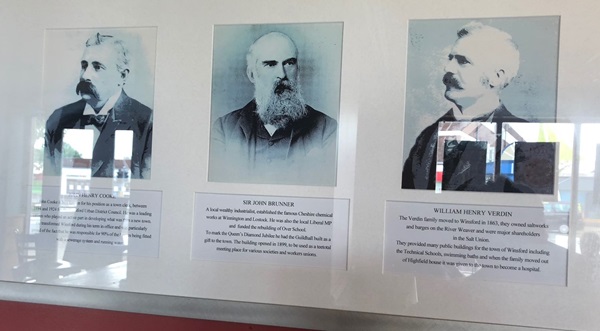
The text reads: John Cooke is best known for his position as a town clerk, between 1894 and 1924 for the Winsford Urban District Council. He was a leading citizen who played an active part in developing what was then a new town. He transformed Winsford during his term in office and was particularly proud of the fact that he was responsible for 90% of the houses being fitted with a sewerage system and running water.
Sir John Brunner
A local wealthy industrial, established the famous Cheshire chemical works at Winnington and Lostock. He was also the local Liberal MP and funded the rebuilding of Over School.
To mark the Queen’s Diamond Jubilee he had the Guildhall built as a gift to the town. The building opened in 1899, to be used as a teetotal meeting place for various societies and workers unions.
William Henry Verdin
The Verdin family moved to Winsford in 1863, they owned salt works and barges on the River Weaver and were major shareholders in the Salt Union.
They provided many public buildings for the town of Winsford including the Technical Schools, swimming baths and when the family moved out of Highfield house it was given to the town to become a hospital.
A photograph and text about Winsford, c1900s.
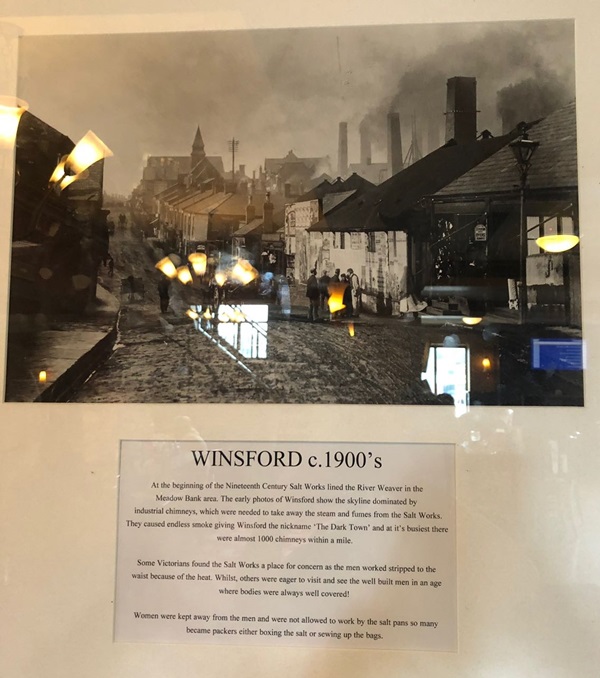
The text reads: At the beginning of the 19th century Salt Works lined the River Weaver in the Meadow Bank area. The early photos of Winsford show the skyline dominated by Industrial chimneys, which were needed to take away the steam and fumes from the Salt Works. They caused endless smoke giving Winsford the nickname ‘The Dark Town’ and at its busiest there were almost 1000 chimneys within a mile.
Some Victorians found the Salt Works a place for concern as the men worked stripped to the waist because of the heat. Whilst, others were eager to visit and see the well-built men in an age where bodies were always well covered!
Women were kept away from the men and were not allowed to work by the salt pans so many became packers either boxing the salt or sewing up the bags.
Photographs and text about Winsford’s public buildings, c1900s.
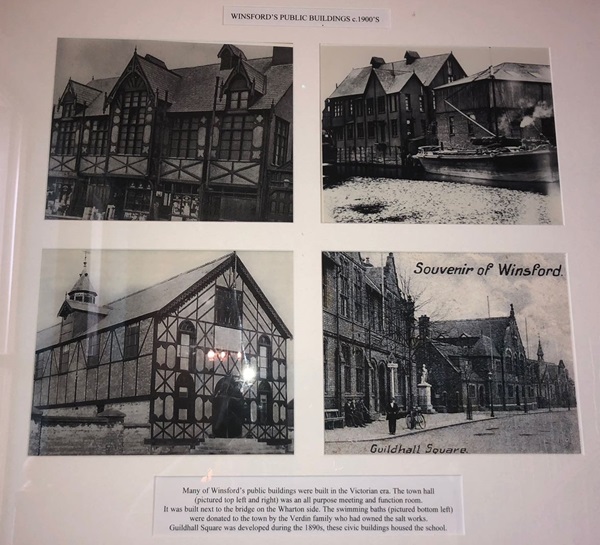
The text reads: Many of Winsford’s public buildings were built in the Victorian era. The town hall (pictured top left and right) was an all-purpose meeting and function room.
It was built next to the bridge on the Wharton side. The swimming baths (pictured bottom left) were donated to the town by the Verdin family who had owned the salt works. Guildhall Square was developed during the 1890s, these civic buildings housed the school.
A photograph and text about Meadow Bank Salt Mountain.
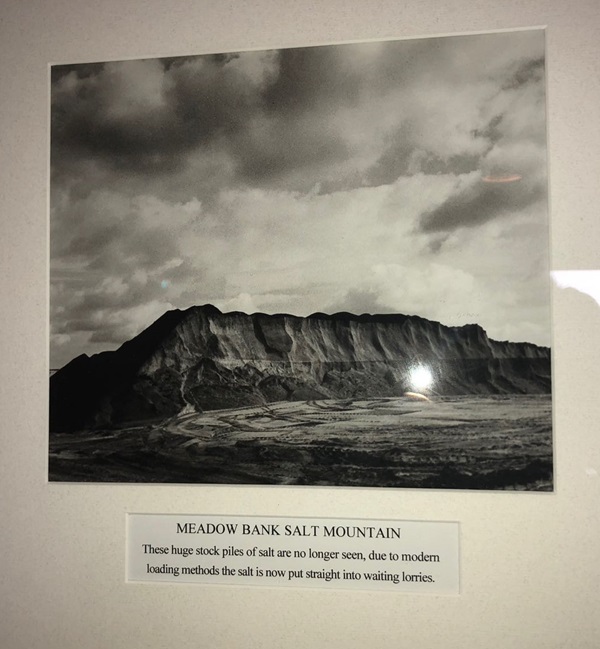
The text reads: These huge stock piles of salt are no longer seen, due to modern loading methods, the salt is now put straight into waiting lorries.
Photographs and text about the salt making process.
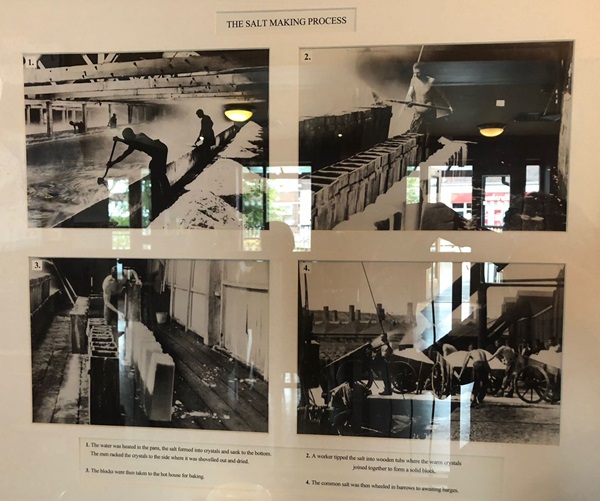
The text reads: 1. The water was heated in the pans, the salt formed into crystals and sank to the bottom. The men racked the crystals to the side where it was shovelled out and dried.
2. A worker tipped the salt into wooden tubs where the warm crystals joined together to form a solid block.
3. The blocks were then taken to the hot house for baking.
4. The common salt was then wheeled in barrows to awaiting barges.
Old photographs of public service vehicles.
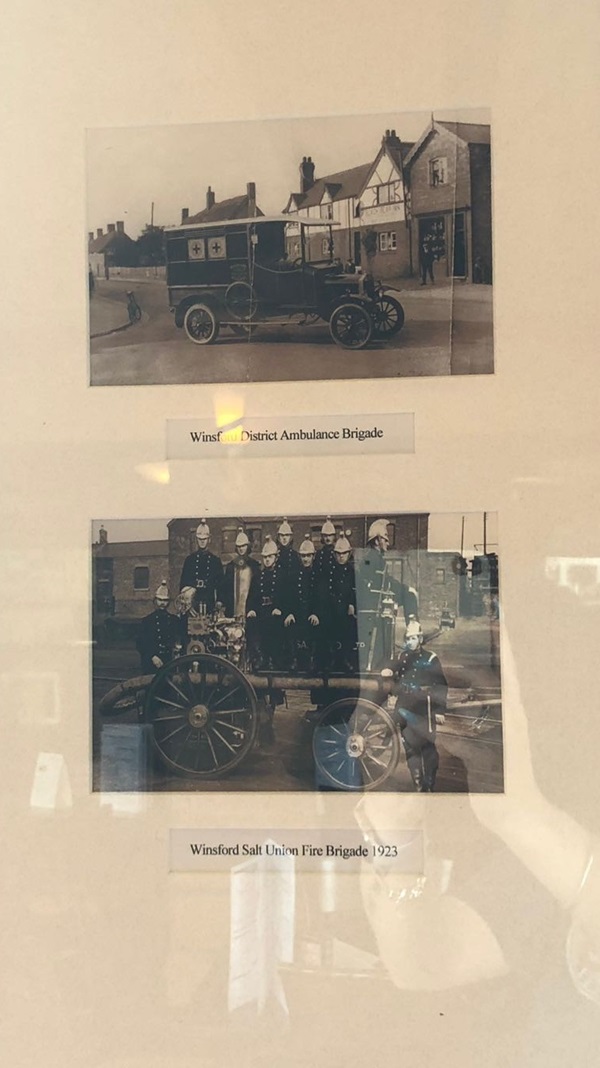
Top: Winsford District Ambulance Brigade
Bottom: Winsford Salt Union Fire Brigade 1923.
An old map of Winsford.
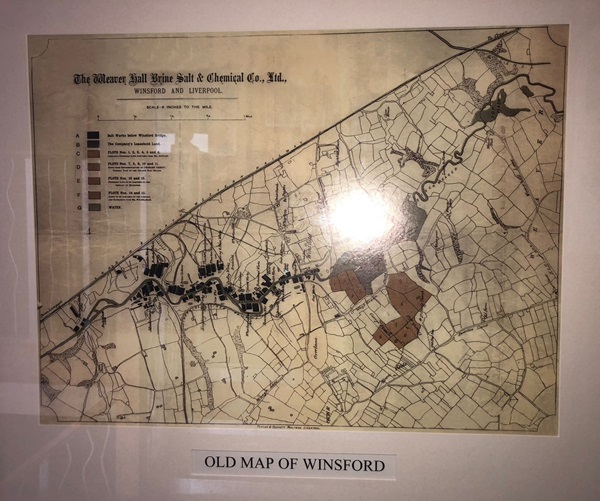
A photograph of worker’s lunch hour at Winsford Dockyard, 1938.
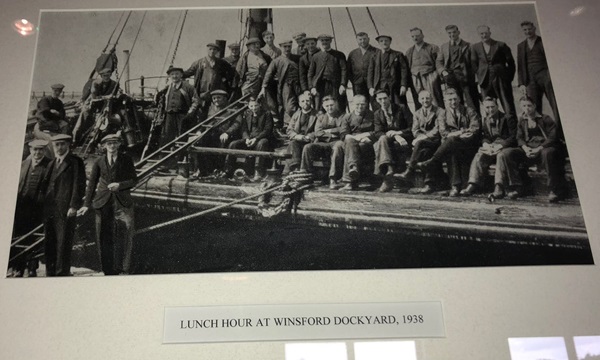
Photographs of the old shops, Winsford, c1900s.
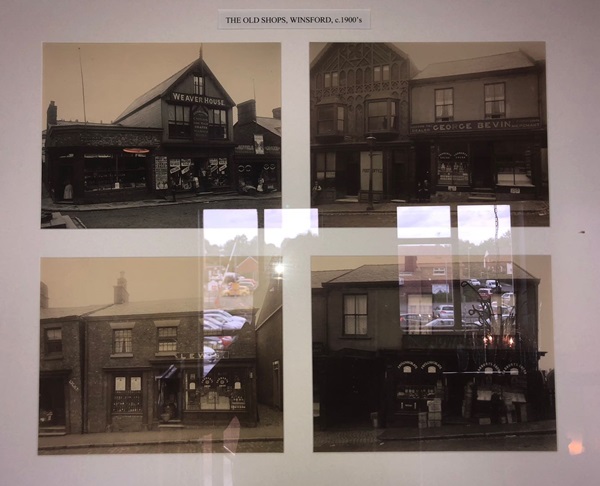
External photograph of the building – main entrance.
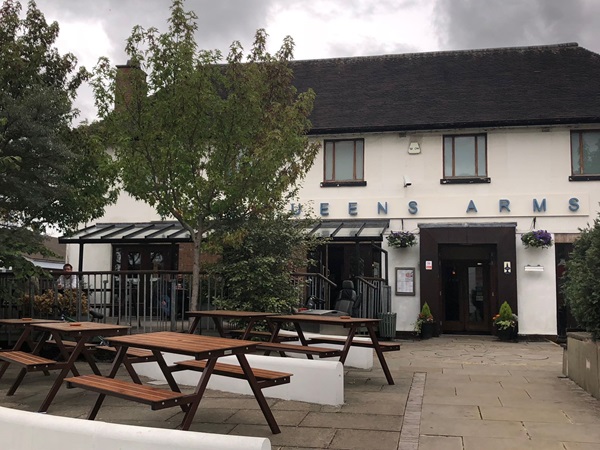
If you have information on the history of this pub, then we’d like you to share it with us. Please e-mail all information to: pubhistories@jdwetherspoon.co.uk